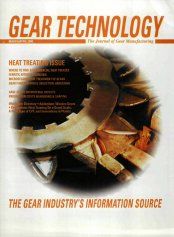Quality gear manufacturing depends on controlled tolerances and geometry. As a result, ferritic nitrocarburizing has become the heat treat process of choice for many gear manufacturers. The primary reasons for this are:
1. The process is performed at low temperatures, i.e. less than critical.
2. the quench methods increase fatigue strength by up to 125% without distorting. Ferritic nitrocarburizing is used in place of carburizing with conventional and induction hardening.
3. It establishes gradient base hardnesses, i.e. eliminates eggshell on TiN, TiAIN, CrC, etc.
In addition, the process can also be applied to hobs, broaches, drills, and other cutting tools.
